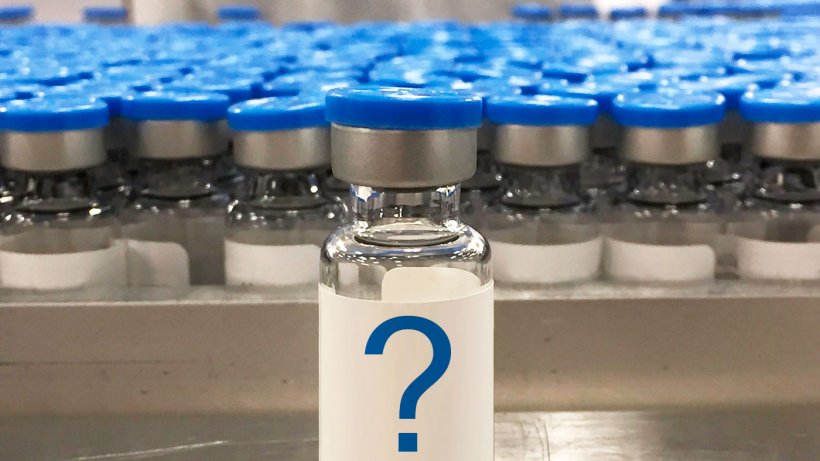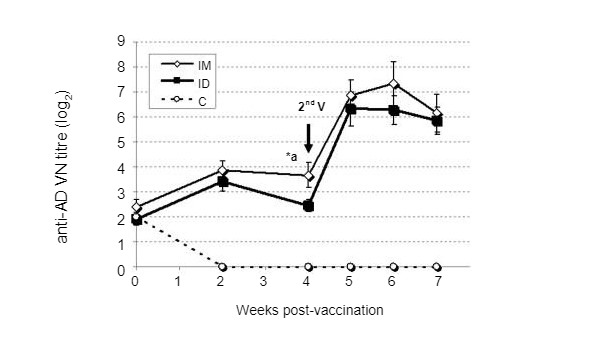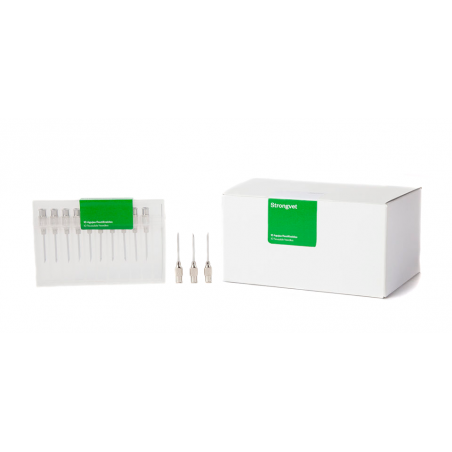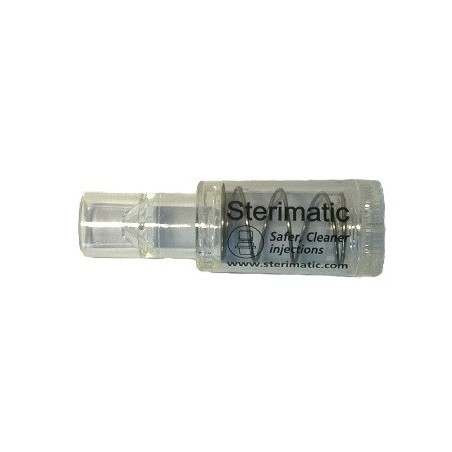The Athenian playwright Aristophanes once wrote, It is from their foes, not their friends, that cities learn the lesson of building high walls and ships of war. While the original focus of this quote was on the defense of a city-state against its rivals, it is also applicable to the defense of the body against infectious disease. For some time scientists have studied and learned from viruses, bacteria, and parasites in order to better protect the body from disease. It was from this field of study that vaccination was discovered, and through this work that vaccines continue to be developed and improved. In swine medicine, vaccines are an integral part of the plan for the maintenance of pig health. As a result of this, there are frequently questions surrounding vaccines and their interaction with the immune system. This article will unpack and answer some of those questions with information from relevant scientific studies.
Q: How important are proper storage temperatures for vaccines and how much vaccine failure can be attributed in the field to errors in this?

Vaccines are generally composed of attenuated (weakened) infectious organisms (viruses or bacteria), proteins, or nucleic acids (DNA or RNA), all of which can be inactivated or destroyed by changes in temperature, light, or pH. Maintenance of the vaccine at proper temperature, often referred to as the “cold chain”, is very important for ensuring the stability and efficacy of vaccines. For example, a 2011 study of influenza virus showed that incubating influenza virus at 50 degrees Celsius (122° F) for 30 minutes resulted in a 100-fold decrease in infectious virus (Krenn et al). Fluctuations in temperature merely from recurrent opening of the refrigerator or faulty refrigerators can be detrimental to vaccine potency. In addition to heat, freezing can be detrimental to vaccine stability, depending on the vaccine. Because of this, it is important to refer to and follow the precautions listed on the vaccine label (Figure 1) and follow expiration dates.

It is very difficult to determine how much vaccine failure can be solely attributed to inability to maintain optimal temperature, as there are multiple potential causes of vaccine failure including but not limited to: bacterial contamination of multi-use vial, chemical disinfection of syringes or needles which inactivates the vaccine, or administration of the vaccine via the wrong route (intramuscular vs. oral). It is important to understand the difference between perceived vaccine failure and actual failure. An example of perceived vaccine failure is when an animal is already infected with an infectious agent at the time that they are vaccinated for that same agent. Disease ensues and the vaccine is blamed as being ineffective when in reality there was simply not enough time for the vaccine to induce a protective immune response.
Q: Can vaccines be mixed together into one shot?
Combining vaccines which are not labelled to be mixed together is not good practice, as different vaccines have incompatibilities related to pH, solubility, adjuvants, or preservatives. Additionally, the inappropriate mixing of attenuated live vaccines may affect the viability of the vaccine organism. However, licensed combination vaccines with antigens or agents specific to different pathogens have been tested for compatibility and lack of interference.
Q: How many vaccines can be safely administered at the same time?
There is no definitive answer as there is marked variability between vaccines. However, care needs to be taken when administering multiple vaccines at the same time as they are not tested for safety and efficacy together, and as a result of this, it is unclear how different organisms, antigens, and adjuvants will interact or modulate the immune response. If multiple vaccines are to be given, the administration of vaccines at the same anatomic location should be avoided by injecting one vaccine on the left side of the neck and the other vaccine on the right side of the neck. If this is not possible, administration of vaccines at different points within the same anatomic region of the neck is advisable. This can help to prevent the mixing of vaccines within an injection site. Additionally, whenever injecting vaccines into an animal it is important to understand where it is anatomically safe to do so. For example, injecting too close to the vertebral column can cause compression of or damage to the spinal cord resulting in paralysis.
Q: Does the frequency of vaccinations influence the immune response?
Following vaccination, specific cells in the body generate antibodies against proteins (antigens) in the vaccine. Antibodies are important for binding to and neutralizing pathogens. However, the immune system also develops a memory response against antigens. This consists of sentinel-like memory cells that circulate throughout the body searching for their specific antigen. If they find that antigen then they proliferate and rapidly start producing antibodies which help increase the circulating antibody titer. This boost to the immune response is how the extra administration of a vaccine following an earlier dose got the name “booster shot”.
Just like the antibody response, memory cells take at least two weeks to develop following vaccination, so it is advisable to wait at the very least two weeks between booster vaccinations. Vaccine labels commonly indicate if a booster dose is necessary; however, consultation with your veterinarian is recommended to develop an effective vaccination protocol.
Q: Is there a difference in immunological response according to the vaccine site (neck vs. ham)? Is one side better than others?
Differences in immunity based on site of injection are found in scientific literature. The neck is the approved site for vaccination, as injection into the ham can result in damage to a very valuable part of the pig. I am unaware of any difference in the immune response to vaccination based on which side of the neck is used for vaccination.
Q: Do needle-less vaccines generate the same level of immunity as intramuscular injections?

There have been several studies comparing these different methods of vaccine administration, and the general consensus is that there is not a significant difference in generated immunity between intramuscular vs. needle-less delivery of vaccine. Needle-less delivery also has the benefits of elimination of broken needles and accidental needle sticks (Chase et al. 2008).

Ferrari et al (2011) compared virus neutralizing antibody titres between intramuscular (IM), intradermal (ID) which is needle-less, and control pigs (Figure 2). There is a small but non-statistical difference in neutralizing titres between IM and needle-less vaccine delivery throughout the study. Shown statistical difference is between both groups of vaccinated pigs and unvaccinated control pigs. Also, note the rapid increase in neutralizing antibody titres in both vaccinated groups following the booster vaccination.
Q: Will future vaccines have different delivery methods (water, feed, aerosolized)?
Various delivery methods have already been explored and applied in some species. In swine, it makes sense in terms of ease of administration and generation of immune protection at the anatomic sites where pathogens infect and cause disease. For example, some pathogens only infect the gastrointestinal tract, so oral vaccines have been developed that stimulate immune cells within the GI tract to develop immunity at the site of infection.






